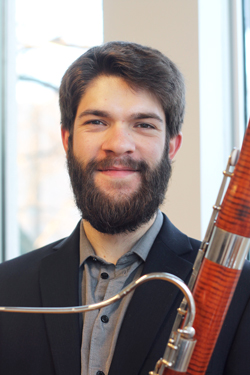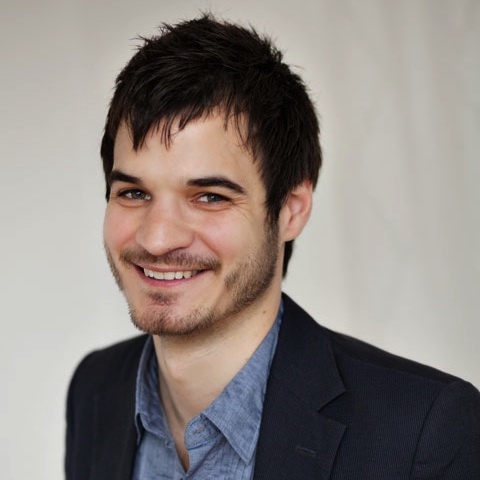by Daniel Hathaway

Sofia Gubaiulina, born in the Tatar Autonomous Republic of the then USSR in 1931, was almost unknown in the West until the 1980s, when Gidon Kremer began performing her violin concerto, Offertorium.
Oberlin senior Benjamin Roidl-Ward discovered the Concerto for Bassoon and Low Strings through a recording he heard in high school, and leapt at the offer to perform it with CME. It’s an astonishing piece that puts the instrument and its player through a whole range of trials-by-fire, including striking multiphonics, keypad vibratos, a high G that comes out of nowhere and other technical challenges — especially in the extended cadenza — that bassoonists would be able to describe in detail but which the audience can only admire.
The seven string players —four cellos and three double basses — have challenges of their own during their eighteen-minute conversation with the solo bassoon. Gubaidulina gives them some frenetic passages to play along with moments of unearthly beauty. Though you might expect low string textures to be dark and muddy, the Oberlin players produced sounds remarkable for their transparency. All three bass players held their bows underhand in the German fashion, giving them access to more nuanced playing techniques.
Throughout the concerto, Roidl-Ward was the embodiment of composure and confidence. He maintained his attractive, sonorous tone in all registers, despite every challenge Gubaidulina threw at him. Here’s hoping that CME will find the opportunity to record this performance — it’s well worth preserving.
Oberlin faculty composer Aaron Helgeson’s Snow Requiem was suggested by a book about the “Children’s Blizzard” of 1888 in the upper Midwest, a storm that arrived unannounced and struck with such ferocity that hundreds of children died, trapped at school or on their way home.
Helgeson derived his musical material from two Norwegian folksongs known to immigrants in the affected communities, and from tralling, a kind of nonsense-syllable singing common in children’s songs. He also drew on the repertoire of the Norwegian folk violin, the Hardanger fiddle. The result is an 18-minute cantata for solo soprano, solo violin, 23 string players, piano, harp and a wordless 14-voice chorus, that closely follows the pattern of deteriorating temperatures between January 12, 1888, between 6 a.m (19 degrees F.) and the same time the following day (-25 F).
Though the piece is not strictly programmatic, it’s profoundly evocative of its subject. The folk songs are never presented whole but in recombined snatches, hauntingly sung by soprano Alice Teyssler, whose clear, strong tone threaded them effectively through the atmospheric textures of the string ensemble. Midway through the piece, Teyssler left the stage, to be replaced by faculty violinist David Bowlin, who masterfully suggested a Nordic folk fiddling tradition while the storm inexorably increased its intensity. Meanwhile, the chorus contributed simple, long lines to the musical fabric.
Snow Requiem was eerily beautiful and thoroughly engaging. Helgeson imbued it with a rich amount of content in a short span of time. The only thing the experience lacked was an ending as compelling as the material that had gone before.
The late British composer Jonathan Harvey’s Wheel of Emptiness refers to the Buddhist concept of achieving freedom from the suffering imposed by the human ego. Musically, it’s anything but empty. Scored for flute, oboe, clarinet, contrabassoon, trumpet, trombone, piano, percussion, string quintet and electronics, Wheel begins with a burst of noisy, colorful musical energy. Impish intrusions by two slide whistles (played by the percussionists) and the growl of the contrabassoon add more color and injections of humor as the 14-minute piece progresses. It ends with a final shimmer on the contrabass.
Wheel was perhaps the most opaque work on Saturday’s program, but like the Gubaidulina and Helgeson pieces, it played with utter commitment, precision and infectious energy by the Oberlin musicians. Timothy Weiss, who earlier had hosted a laid-back, informative pre-concert conversation with Aaron Helgeson, was the model of quiet efficiency as a conductor in these three wildly different works.
The audience for these Saturday concerts continues to grow, and it should. This level of playing is nothing but amazing.
Published on ClevelandClassical.com March 13, 2015.
Click here for a printable copy of this article




